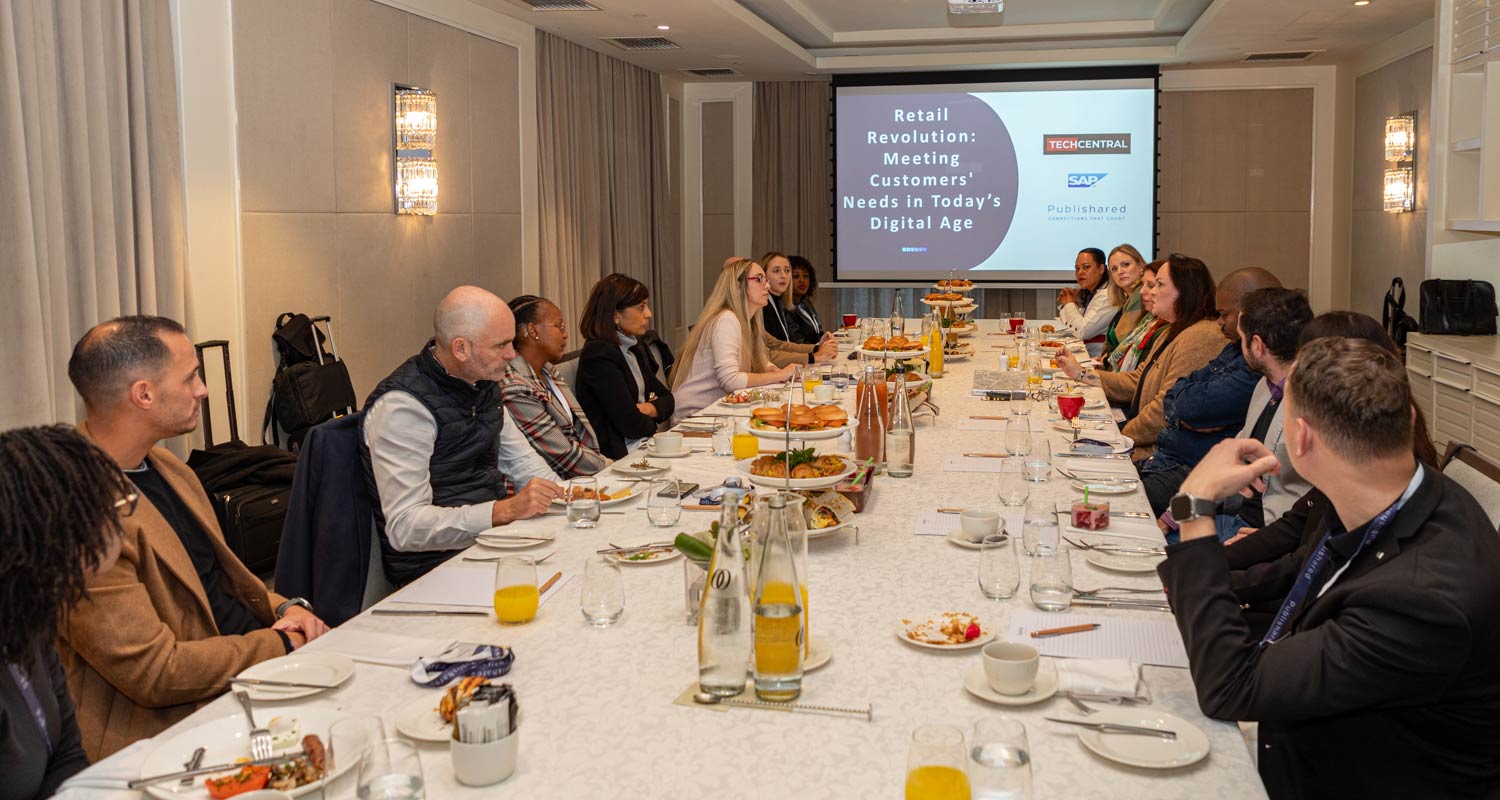 TechCentral and SAP recently hosted a customer roundtable with leading executives to talk about the evolving needs of the South African consumer, including the strategies and initiatives that brands are developing to satisfy and exceed them. This is what transpired.
TechCentral and SAP recently hosted a customer roundtable with leading executives to talk about the evolving needs of the South African consumer, including the strategies and initiatives that brands are developing to satisfy and exceed them. This is what transpired.
We live in interesting times. Our post-pandemic economic landscape is strewn with lingering challenges: inflation, constrained supply chains and a long simmering cost-of-living crisis, made worse by inflation, resulting in lowered consumer purchasing power. Amid this unpredictability and turmoil, there is one undeniable fact: the retail experience is rapidly evolving from a transactional process to a model built on deep, enriching relationships at every step of the customer journey.
To unpack how South African retailers and brands are keeping pace with the technological curve while continuing to find ways to improve and enhance the customer experience, TechCentral hosted a roundtable conversation sponsored by SAP with some of the country’s retail leading executives. Attendees discussed the ever-evolving needs of the South African consumer, key trends and challenges affecting the retail sector, including retailers’ strategies to drive profitable growth.
Read more about SAP retail industry solutions
The discussion also covered the way retailers are using technology to enhance and support customer engagement, both in-store and online, and how this elevates the retail experience to another level. Attendees agreed that several megatrends have converged to significantly impact consumer behaviour.
These included:
- The increasing digitisation of our surroundings (driven by the combined effects of the pandemic), and the changing preferences and behaviours of consumers. Delegates were of the view that retailers and brands must establish themselves as an essential part of consumers’ everyday lives.
- Customer behaviour: Retailers must develop a comprehensive understanding of the way consumers lead their lives – how they eat, shop, work, and play – and use this knowledge to provide value in the right place, and at the right time.
- Consumer-centric view of the entire value chain: Retailers and brands are now required to have a consumer-centred view of their entire business, from supply chain and operating model to content and marketing, and a technology ecosystem powered by real-time consumer data.
The South African consumer
The South African consumer continues to evolve, exhibiting tastes, preferences and behaviour that has been accelerated by impacts of the pandemic, as well as the post pandemic economic situation. Consumers are moving online to research and purchase products as never before and are becoming increasingly comfortable traversing channels amid an expanding retail shopping journey.
The overwhelming consensus amongst delegates was that South African consumers have become increasingly price-conscious and seek value from their purchases. While price is an important aspect of purchasing decisions, attendees also agreed that consumers tend to be prepared to pay a premium for quality products if the value of these products is clear. Price-conscious and value-seeking South African consumer tends to be less brand loyal as they shop for specials.
 Strategies for driving profitable growth
Strategies for driving profitable growth
To address this ever-evolving expectations of consumers, as well as the increasingly challenging operating environment, several critical strategies were cited for driving profitable growth:
- Create value: Retailers and brands need to create a very clear understanding of the value they offer to their customers and be able to effectively communicate the value of their products and services. Generic messaging that focuses on promising value is not sufficient and retailers must demonstrate actual proven delivery of value. Some ways to do this include providing an aspirational shopping experience, focusing on convenience, offering in-store experiences that extend beyond retail, and using mechanisms like gamification to enhance brand and value perception.
- Contain costs: It is essential to strike a careful balance between containing costs and maintaining high product and customer experience standards. Strategies to achieve this balance include relooking sourcing strategies to drive value chain efficiencies, developing strong and future-orientated supplier relationships to enhance supply chain reliability and resiliency. It is also important to focus on pricing and margin management, removing peripheral costs, and leveraging data and customer insights to improve personalisation and develop alternative revenue streams.
- Understand customer segmentation: Gain an understanding of the lifestyle journey of the shopper, including habits and patterns, by utilising analytics to track segment-specific customer sentiments, and by leveraging data and insights to inform segment-appropriate pricing and discount strategies, range, format and stock levels.
- Restore loyalty: Customer loyalty programmes are key. The successful execution of these activations relies on the ability to provide personalised rewards to consumers and to identify meaningful segment-specific touchpoints to engage with consumers.
Leveraging technology to help meet consumer expectations
Technologies like in-store sensors, AI, natural language processing, robotic process automation, digital customer engagement platforms and augmented reality all help to drive a connected retail experience. Retailers need to understand how to properly integrate these technologies into operating and customer engagement models so that they link seamlessly across physical stores, e-commerce platforms and digital channels.
Even though it’s been a difficult few years for the retail industry, it has provided the opportunity for them to rethink, recalibrate and reimagine retail. Retailers and brands that don’t make the transition to address the new expectations of consumers emerging in real-time run the risk of becoming irrelevant. As Deloitte highlights in their 2023 Retail Industry Outlook: “Leaders tend to be data-driven and can swiftly respond to the changing consumer. They prioritise investments in marketing and merchandising, omnichannel capabilities, digital transformation and supply chain.”
Innovative retail solutions from SAP
SAP’s cloud solutions for retail and fashion enable a new level of co-innovation with customers and partners, enabling next practices and new business models that assist retail companies in seizing future opportunities. There are many paths that retail businesses can take to become intelligent, sustainable enterprises that provide superior customer experiences. SAP’s scalability, security, global reach, business networks and business process knowledge across retail; and adjacent industries are success factors for its customers and ecosystem, regardless of which approach they choose.
Click here to learn more about SAP’s purpose-built solutions for the retail and fashion sector.
TechCentral and SAP would like to thank all of those who participated in the roundtable discussion.
- Read more contributions from SAP on TechCentral
- This promoted content was paid for by the party concerned




